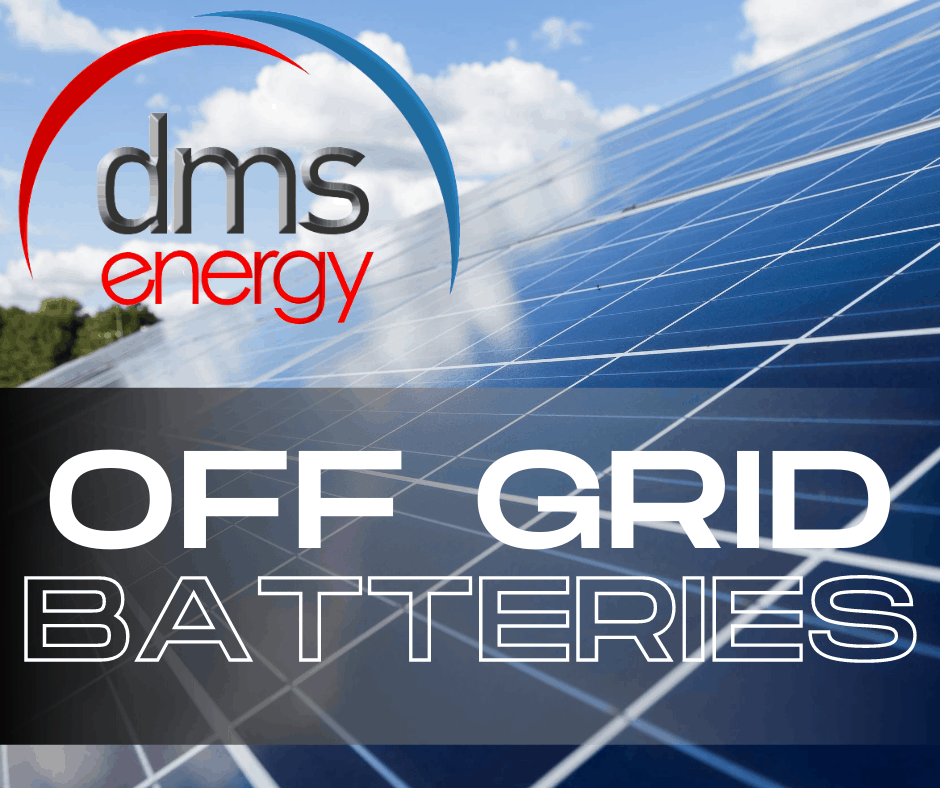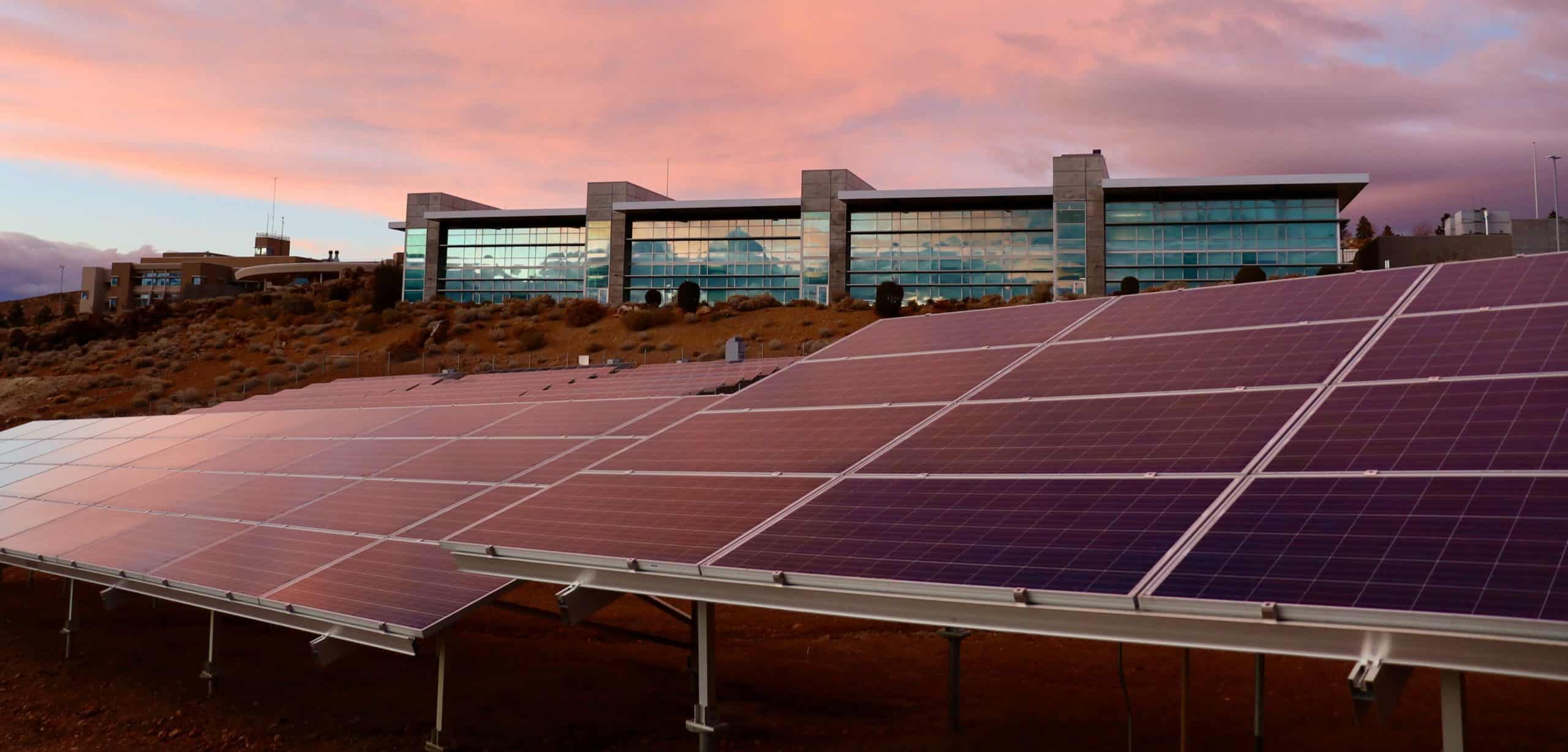Save Now, Pay Later.
With flexible payments from handypay.
Save Now, Pay Later.
With flexible payments from handypay.
Published

As everyone should know by now August 2020 is off grid month. (Click here to go to our Energy News page to catch up on past articles about off grid)
Today I thought I would cover batteries.
These are the most integral part of an off grid system especially one that takes its energy source from solar power. As we all know solar power is a daytime phenomena and we don’t have any way of harnessing moonlight so we must design our solar system to be able to generate enough power to run our daytime loads as well as collect enough extra energy to use of a night time. So we need storage of some description and the most common type of storage device is a battery of some description.
Lead Acid batteries are the most common storage device. We all have one in our cars. They have been around for well over 100 years. Invented by a French physicist in 1859 to be exact. Charging the battery starts a chemical reaction where the sulphuric acid electrolyte largely converts to water and discharging the battery converts it back to sulphuric acid again. We discussed the chemical composition a couple of times before so we go into into it again. They come in 3 main varieties.
Flooded cell. This is the cheapest format but requires a lot of maintenance. The cells have to be constantly topped up with electrolyte and if not looked after they will dry out and fail. These have been used for off grid systems for years.
Next is AGM Lead or absorbed glass mat cells . These are the next most prevalent in the lead acid line up and the electrolyte is held within a fine fibreglass mesh. These are generally spill proof and maintenance free. It also allows plates in the cells to have different configurations such as laying them flat or being wound into a cylindrical shape. These are commonly used as a traction battery and very often we see them in off grid systems.
Lastly we have Gel Lead. These are what we have used for over 13 years.
These are made by mixing the sulphuric acid electrolyte with silica gelling agents. These have all the advantages of an AGM battery but they last longer as they have better heat transfer abilities and they can operate better in extreme temperatures than the first 2. But over charging is a death sentence for them as operating with a jelly-like electrolyte means if we gas those batteries they are kaput. So they have to be set up correctly. Both Gel and AGM fall into the VRLA category of lead battery and that stands for valve regulated lead acid. You don’t really want to take these past 50% ever in regards to discharge.
Our oldest lead battery systems are 13 years old. Tried and true technology and cost effective for off grid. We know how these are going to age and perform.
Next we have lithium batteries. These come in a variety of chemistries but the predominate identifying ingredient is lithium. Lithium iron phosphate or LiFePo is the most common, but Lithium manganese, lithium titanate, lithium cobalt oxide and the list goes on.
Lithium chemistry batteries are very energy dense. But they have to be managed correctly or they can catch fire with what we call thermal run away. Some chemistries of lithium are better than others at avoiding this.
To avoid over charging the batteries have a lot of supporting electronics to maintain correct cell voltage and balance. We have been using lithium in off grids for around 7 years and to be honest in some applications this is the best chemistry but lithium off grids are the only batteries that give us dramas out in the field. It’s not the chemistry, it’s the supporting electronics that cause nuisance faults. When you’re only supply is an off grid system a nuisance trip or fault can be a big deal.
They are great for sites that have high current requirements, and these can be drawn down to 80% without to much detriment.
Flow batteries
These are cool and I wont go into too much detail as I could dedicate a month of Powersavers to this technology. The best way to describe this technology would be to compare it to electroplating. Charging is building the layers of zinc plate on the anodes and discharging is stripping the layers back off again. No discharge with these batteries. In theory you could charge one up to 100% and turn it off and then turn it back on in 50 years and it would be still be full of energy.
These suit larger installations. There is no loss of capacity but the pumps and ancillary equipment that makes the magic happen do where out.
DMS Energy is currently installing the largest flow battery installation in Tasmania for one of our commercial off grids.
There are a ton more battery chemistry types out there and there are other types of energy storage devices other than batteries but these are the most common in Tassie.
DMS Energy are the North-West coasts leading off grid designers and installers. We are the largest users and sellers of Victron off grid components as well. Coupled with our quality panels such as LG, Qcell and SolarEdge, and our long term relationship with Battery Energy Australia we have the right combination of components to suit every application.

Simple, Low Rate Green Loans

Introducing award winning finance provider, Handypay, to bring you the most Competitive, Flexible and Versatile finance solution available in the home improvement industry today!
We have partnered with Handypay so customers can access a simple, affordable green loan for their solar panels and home batteries. Get a no-obligation quote and pre-approval in minutes, not weeks.
DMS Energy strives to Honestly, Ethically and Accurately assist Tasmanians to meet their energy reduction goals.
DMS Energy have advised countless locals on the right energy solutions for their home’s and business’s.




DMS Energy are not your typical energy efficiency salesmen! We are long time locals offering expert advice on solutions that are tailored to your individual needs. Talk to one of our experts today.